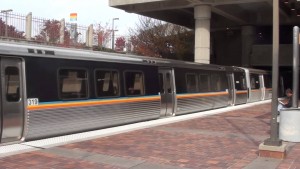Buses, trains, and hundreds of pedestrians occupy this area every day. The sound of the tracks and wheels colliding upon one another gives the sense of being in the city; similarly to New York. College Park MARTA station is the 1st stop after the airport so it begins the connection between citizens and the rest of the city. Whether you’re traveling to work, school, events or even traveling to the airport, MARTA is there to provide you with that transportation. The MARTA station costs $2.50 for a one-way pass which allows one to go from one destination to another. Being a Georgia state university student, we have the luxury of getting a discounted monthly pass which allows us to travel unlimitedly each month to and from school as well as other stations and stops.
Monthly Archives: February 2016
Annotated bibliography #’s 1-3
Frazier, Ian. “Hidden City.” The New Yorker 28 Oct. 2013. The New Yorker. Web. 3 Feb. 2016.
In the article “Hidden City” by Ian Frazier, he begins explaining how homelessness in New York is at an all time and numbers like those have not seen since the Great Depression and in 12 years homelessness has increased by seventy-two percent. Ian has described how since the increase of homelessness has adverted individuals to resort to “living underground, in subway tunnels and other places out of sight.” Further down the article, Frazier makes and interesting point on how homeless families engage. He begins to explain how homeless families mostly stay off the street and do not normally engage with other passengers on transportation and rarely beg. After describing the average homeless family, Frazier begins to go into detail on a specific family and the programs available in New York. “Hidden City” can be translated in a way that it correlates with my built environment destination here in College Park, Georgia. Hidden City allows one to get an insight on how homelessness really works. It shows that there are programs out there to help but the programs don’t want to help. Ian Frazier gives a glimpse on how society views those are less fortunate and do not have the means to provide for themselves or a family.
“Homeless youth: A crisis we choose not to see” is a very heartwarming article as it explains an growing epidemic of homelessness among youth in Atlanta. YPM is one of the only three shelters that is available for emergency assistance. In this article, factors contributing to youth homelessness is discussed. For instance, youth are turned away by their families, many of their parents or guardians suffer from addiction and illnesses and many teens become homeless as the result of their parents or guardians being incarcerated. The kids have been described as “hidden in plain view” and being victims of child neglect. Foster care is a system that one must outgrow one day. It is not a resource that is available to all because everyone is maxed out at a certain age and then must fend for themselves. This article takes homeless youth and explains its connection to adult homelessness. We turn a blind eye to homelessness but fail to realize it is happening in our own backyards. These kids are the same ones we play with, the ones that sit next to us in class, yet at the end of the day, they are the same ones that do not get to lay in bed at night, under a roof they can call their own. This article points a very interesting factoid that states that these teens are not allowed in Atlanta’s family shelters. Homelessness of our youth can lead them to committing suicide, allowing them to be vulnerable to pedophiles and sex offenders and have a drug addiction forced upon them.
“Substance Abuse and Homelessness |National Coalition for the homeless.” Web. 3 Feb. 2016
“A common stereotype of the homeless population is that they are all alcoholics or drug abusers.” Substance Abuse and Homelessness begins with the stereotype that all homeless people are addicted to alcohol or drugs. Although a mass majority struggle with addictions, most occur because of homelessness not the result of becoming homeless. Often substance abuse is a cause of homelessness because it can cause the loss of jobs and the loss of relationships with family members. Many do not realize that stress and struggle often result in the addiction to both alcohol and drugs. Trying to pay off bills and losing a job can trigger someone coping with their problems by using drugs or alcohol. Often homelessness causes substance addiction; many use it as a temporary pain reliever and over time become used to it. Motivation to overcome drug addiction among the homeless is slim to none as they are more focused on finding shelter and their next meal.
Built Environment Project
For the built environment project are we allowed to use captured videos to help give the illusion of our chosen built environment? Also would there be any restrictions on the types of videos such as personal interviews, etc.?
